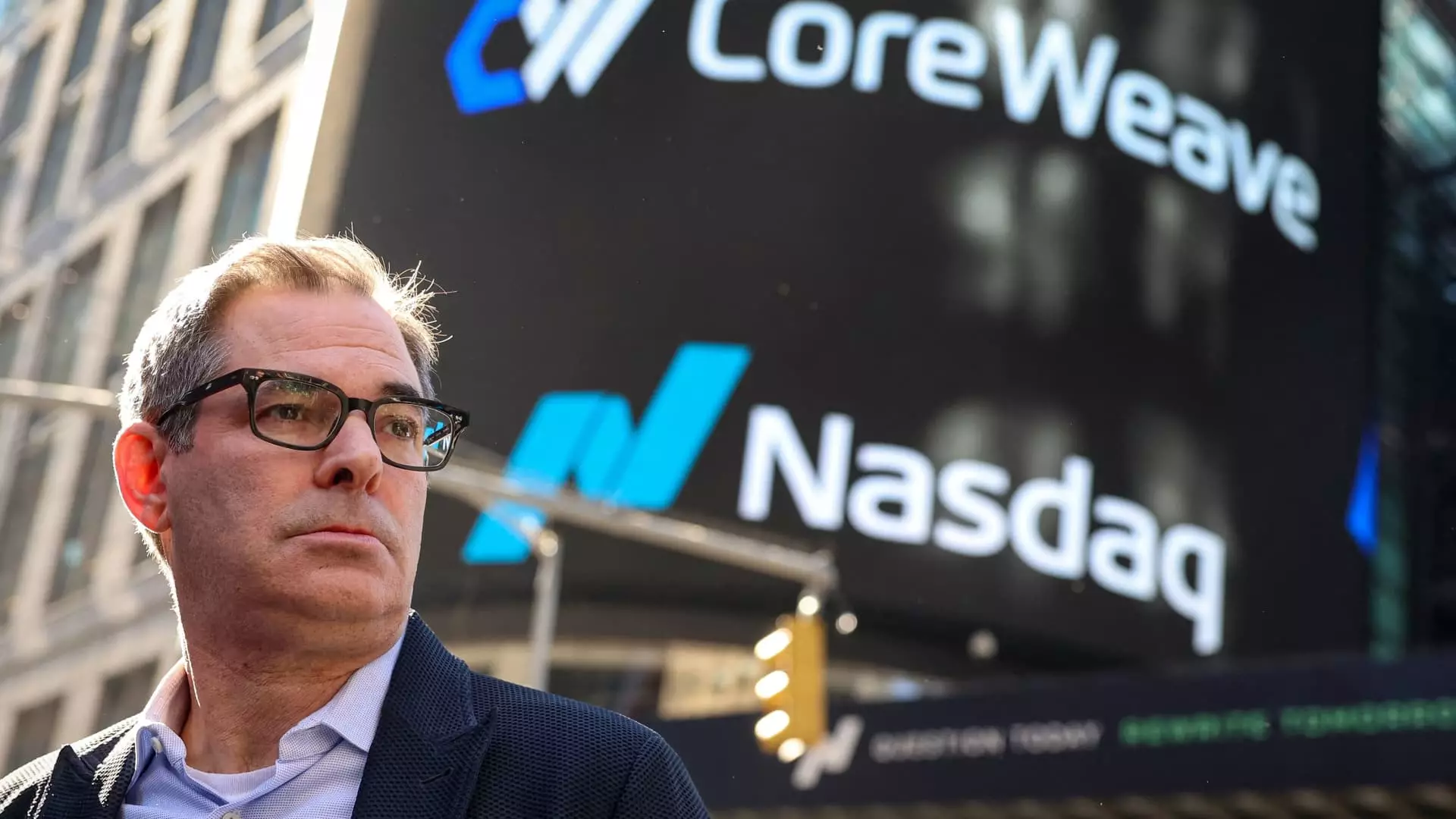CoreWeave, a player in the artificial intelligence server rental market, recently entered the public arena with a bold vision, yet the company’s growth plans have raised eyebrows. The latest earnings report, marking its first since its public debut in March, highlights an ambitious capital expenditure (capex) forecast of $20 billion to $23 billion for the year, significantly outpacing a mere $4.61 billion expected by analysts. This glaring discrepancy begs the question: is CoreWeave genuinely positioned for the monumental growth it envisions, or are these aspirations mere mirages fueled by short-term demand?
In an age where companies chase the elusive tail of AI profitability, CoreWeave finds itself at a crossroads. CEO Michael Intrator claims that this increased spending reflects “demand signals” from key clients clamoring for an expedient infrastructure. However, it’s essential to scrutinize whether these so-called signals are sustainable or merely symptomatic of a market that is currently buzzing but may fizzle without a solid foundation.
A Double-Edged Sword: Growth versus Debt
The stock’s volatile response after the earnings announcement underscores the precarious position in which CoreWeave finds itself. Initially dropping over 5% before regaining some ground, the fluctuations highlight the market’s hesitation to fully embrace the company’s growth narrative. With investor sentiments already swirling around the potential risks associated with high debt levels, the concerns voiced by analysts about the viability of the company’s growth become even more pertinent.
Analyst Gil Luria’s downgrade from neutral to underperform encapsulates the fear that CoreWeave is investing heavily in a seemingly lucrative but fundamentally unstable business model. The notion that such aggressive scaling is a smart move in an industry characterized by rapid changes raises critical alarms. Is it prudent to chase growth when the ratios between debt and revenue return appear alarming? A business model overwhelmingly reliant on short-term renditions of “overflow capacity” may ultimately be a recipe for disaster, especially as competition intensifies and market dynamics shift.
Revenue Figures or Smoke and Mirrors?
The reported revenue growth of 420% and projections that promise figures between $4.9 billion and $5.1 billion this year seem compelling on the surface. However, one needs to peel back the layers to determine if this growth is sustainable. When performance obligations experienced a slight decline, it leaves room for skepticism about whether CoreWeave’s success is a fleeting phenomenon or a temporary boost based on current demand rather than a well-founded business strategy.
While exceeding revenue expectations may evoke consumer confidence, it is crucial to address the reality of the net loss of $314.6 million the company reported—a stark contrast to the picturesque revenue growth presented. Investors must consider the implications of such losses, particularly in light of substantial stock-based compensation tied to their initial public offering, which may distort the underlying financial health of the company.
The Role of Strategic Partnerships and Future Prospects
Despite the skeptics, CoreWeave’s impressive client base, which boasts significant names like Microsoft and Nvidia, bodes well for its reputation in the hyper-competitive AI market. The alliances, especially the five-year deal worth nearly $12 billion inked with OpenAI, signal the company’s capabilities in attracting high-profile partnerships. However, does reliance on these relationships for stability imply that CoreWeave is gambling on the fortunes of others?
As the dust settles post-earnings, the company’s next steps will be crucial. The ability to transition from dependence on temporary surges in demand to establishing a framework for long-term stability will determine whether CoreWeave can thrive or remain shackled by its optimistic projections. Scaling a business hinges not just on immediate revenues, but also on a strategy anchored in sustainability and prudent financial management. The overarching sentiment echoes throughout the financial community: growth is admirable, but it must come with caution.

